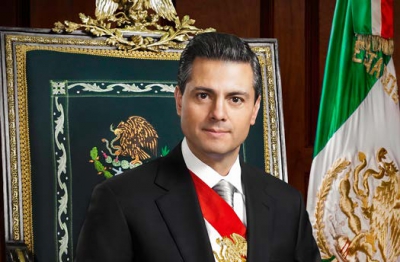[NGW Magazine] Mexico’s Basins Sleep as Gas Imports Peak
Elections in Mexico threaten to slow down developments upstream and the country is facing a growing supply-demand gap. It will be some years before that is addressed perceptibly by new production, giving cheap US gas a clear run at the market.
Mexico’s present administration had big hopes for natural gas, forecasting a big leap in output. The constitutional reform that was approved in 2013 ended state-run energy monopolies and was expected to bring in private energy producers and plenty of foreign investment.
Dependency on the US for natural gas imports was correspondingly forecast to fall. In a speech early in his administration, the president, Enrique Peña Nieto, said it was “ironic that a country as rich as Mexico, especially in gas, has to import more than a third of the demand of the country.” Mexico, as a result of the energy industry opening, would become self-reliant in its production of natural gas and reduce its need for US imports, he said.

President of Mexico, Enrique Peña Nieto (Credit: Wikimedia Commons)
Things did not go as planned.
In the final months of the outgoing government, Mexico’s natural gas production is at a 12-year low. In 2017, national natural gas output fell to around 5bn ft³/day, down from more than 7bn ft³/day in 2010.
Imports from the US are at record highs. In March, energy secretary Pedro Joaquin Coldwell said that Mexico is meeting more than 84% of its demand with imports. Last year, Mexico spent more than $6bn on US natural gas, an all-time high and a 52% increase from a year earlier, according to data from the central bank.
“In the last eight years, our natural gas demand has increased almost 50%, while the production has fallen 1.9bn ft³/day,” Coldwell said in March. “We are depending on imported gas to boost national economic activity, while many of our conventional oil and natural gas fields are in a state of decline.”
The future of natural gas in Mexico is now far more of an economic concern than it was at the start of the current administration. Combined with looming political risk that could slow or stall future oil and gas field auctions, what will become of Mexico's natural gas market is one of the energy sector’s biggest question marks as the country prepares for a government change at the end of the year.
Shale Auction
Mexico’s energy experts think production of shale gas and oil is the solution. The country is home to some of the world’s most promising natural gas basins: the Burgos and Tampico-Misantla. Allowing shale producers to develop the areas could send output to all-time highs, the government has said. In September, Mexico will hold its first-ever shale oil and gas field auction in the Burgos basin. Only nine areas will be offered to producers, but the amount of gas they are thought to hold is massive.
The energy secretary forecasts that the areas contain as much as 1.2bn barrels of oil equivalent (boe) of conventional and shale gas and oil, while the Burgos basin alone is thought to hold as much as 55% more resources than the entire Eagle Ford play in Texas. The untapped natural gas in the Burgos basin is equivalent to 40 times the amount of Mexico’s current annual imports, Coldwell said.
“In only these nine areas, there is three times the potential than the 46 areas already awarded in previous onshore auctions,” deputy hydrocarbons secretary Aldo Flores said in March. “The potential is truly gigantic and it is a responsibility to take advantage of this opportunity,” he said, adding that if all the areas are awarded, investment of as much as $2.3bn would be required to develop the resources.
Mexico has awarded oil and gas development rights in 46 onshore areas in auctions dating back to 2015. The September 27 auction of the nine shale areas will be held on the same day as 37 additional onshore oil and gas fields that are slated for conventional development in three regions of the country are put up for bids.
“In previous tender processes we have seen promising results regarding natural gas,” national hydrocarbons commissioner Juan Carlos Zepeda told NGW in an emailed response to questions. He added that the onshore gas development areas awarded last year could result in a gas production of 378mn ft³/day, or 7.5% of current national production.
“Studies by the International Energy Agency indicate that Mexico is sixth in the world in unconventional resource reserves,” Zepeda said. “The diversification of sources of natural gas for national consumption is the main strategy to increase domestic production.”
Eight companies have already registered to compete in the September conventional onshore auction, including state-run Pemex and Tonalli Energia, a joint venture between Canada’s International Frontier Resources and Mexico’s Grupo Idesa. Pemex is so far the only company qualified to bid in the shale auction.
Amlo Threat
The September auction might be Mexico’s most intriguing to date. It is the country’s initial foray into shale oil and gas development and will be the first auction held after the July 1 presidential elections. With incumbent Pena Nieto not standing for re-election, a new administration will enter power in Mexico December 1.

Andres Manuel Lopez Obrador (Credit: Wikimedia Commons)
If the winner is front-runner Andres Manuel Lopez Obrador, the auction might be the last public tendering of oil and gas areas in Mexico for some time. Amlo, as he is known, has vowed to slow the auction process and review the more than 100 oil contracts awarded to private producers during Pena Nieto’s government.
As of mid-May, Lopez Obrador held a 20 percentage-point lead over his closest competitor, Ricardo Anaya of the National Action Party (PAN), according to a poll published by newspaper El Financiero.
“We are going to review the contracts that have been signed since the energy reform was implemented. We are going to see in what terms the contracts were made under and assure that they aren’t unfair or one-sided,” Lopez Obrador said in a round-table interview with Milenio TV in late March. “In the case that the contracts are bad for the country, the process to reverse them will be a legal process, we won’t act in an arbitrary way. We will correct all that has been done poorly.”
He said the contracts will be reviewed to avoid potential corruption scandals in the energy industry during his administration like those seen during the current government. Pemex has been under investigation since 2017 for alleged wrongdoing in relation to contracts awarded to Brazilian construction firm Odebrecht between 2010 and 2014.
Modest Interest
Given the political risk, as well as above-ground risks such as water availability and environmental concerns, there is a chance the September auction receives limited interest from foreign and private companies, vice president of research at Welligence Energy Analytics, Pablo Medina, told NGW in an email.
“The blocks on offer, while being interesting opportunities, aren't exactly as prospective as some other onshore areas in the country,” he said. Given the risks, and that Pemex is yet to seek partners in areas that could be attractive to potential investors, “we expect a modest level of interest from investors in the upcoming licensing rounds,” Medina said.
If interest in the auction is tepid, and in the event of a Lopez Obrador presidency, the already complicated dilemma for Mexico’s natural gas future could become even more difficult.
In the country’s forecast for the natural gas market, the government said production, in a best-case scenario, could reach 6.2bn ft³/day by 2031. The forecast for the worst-case scenario was 4bn ft³/day. By 2031, national demand will hit almost 9.7bn ft³/day, according to government estimates.
The direction Mexico will take – either towards increasing local production of natural gas or more dependency on the US imports – could depend on the outcome of the September 27 shale and onshore auction. And who the country’s next president will be.
Adam Williams



